Column: Larry Tesler of PARC taught Steve Jobs how a personal computer could work
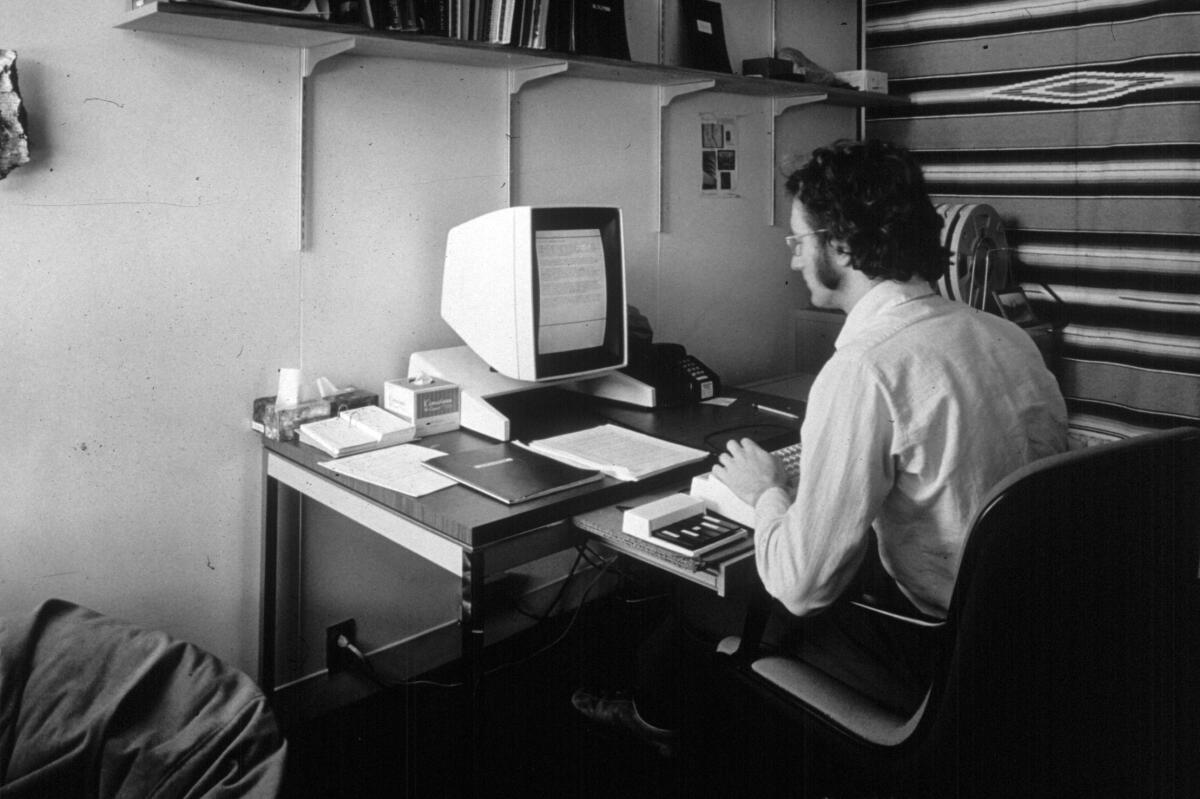
- Share via
Of all the seminal moments in the creation of the personal computer, one stands out: the 1979 demonstration Steve Jobs of Apple got of the secret technology being developed at Xerox’s Palo Alto Research Center, the legendary PARC.
Larry Tesler, who died Sunday at 74, was a key figure — possibly the key figure — in that event.
Tesler played an even greater role in the personal computer revolution than that. Unlike many of his colleagues and certainly his superiors at PARC, he had a vision of the PC as a consumer appliance, not merely a business machine.
They were totally blown away.... Jobs was waving his arms around, saying, ‘Why hasn’t this company brought this to market?’
— Larry Tesler, recalling the demonstration of Xerox PARC technology shown to Steve Jobs in 1979
In 1980, Tesler became one of the first PARC engineers to move to Apple, which was then developing its Lisa personal computer and helping to design the Macintosh, eventually becoming Apple’s chief scientist. There and throughout his career, he was an advocate of keeping the machines’ interface as simple as possible, working to strip away some of the complexities beloved by his fellow engineers.
But his most important contribution to computing history may have been his role in giving Jobs a front-row view into PARC’s technology. I told the story in my 1999 book about PARC, “Dealers of Lightning,” basing the account on interviews with Tesler, other PARC participants and members of the Apple team who were present.
As I reported in the book, confusion is epic about the Jobs “show and tell” at PARC, with almost as many variants as there were participants. But a couple of points are important.
A merger of Xerox and HP would say more about the past of the computer industry than the companies’ future.
First, Jobs got entry to PARC, normally a very closed institution, because Xerox had bought a piece of his company. Apple was then an up-and-coming private company, the focus of intense bidding by bigger firms looking for a strategic foothold in a new commercial market.
Jobs had agreed to give Xerox a stake in Apple’s “mezzanine” financing round, traditionally the last private round before a public stock offering, on condition that he get a look behind PARC’s doors.
Second, there was not one demonstration but two, both in December 1979. At the first, the PARC demonstrators, wary of allowing outsiders to see their work, out of concern it would be co-opted, gave Jobs and his team a sanitized tour of their technologies — the Alto personal computer, the mouse (imported from the nearby Stanford Research Institute) and a word-processing program known as Bravo, which would later evolve into Microsoft Word.
Jobs left, content with the demo. But when he got back to Apple, some of his colleagues who knew more about PARC told him how much he had missed. Infuriated, he demanded a second, more complete look, and Xerox superiors ordered PARC to deliver it.
The very idea of allowing Jobs through the door had split the PARC team. On one side were those who thought Xerox might yet bring their technologies to market under its own brand, and who consequently saw Apple as a competitor. On the other was a minority, including Tesler, who had given up on Xerox and considered Apple a potential collaborator, possibly the only hope of bringing their work to market.
“I wanted a deal to happen,” he told me.
Gary Starkweather, the low-key engineer behind ‘arguably the greatest invention’ at Xerox, died Dec. 26. He was 81.
Tesler had come to his advocacy of simpler design in part by hanging out with hobbyists at local computer fairs and the Homebrew Computer Club, which met in nearby Menlo Park. Some of his PARC colleagues dismissed them as gadgeteers, but he knew that they also had an interest in making their gadgets work more efficiently and at lower cost, if necessary by hardware and software shortcuts.
He felt an affinity with Apple, which had some of the same concerns. He was also more familiar with Apple than other PARC engineers, having dated a woman who worked for the company.
“I had been to an Apple picnic in 1978, when it had 30 employees,” he recalled. “It was at Marineworld in Redwood City, and the entire staff, with kids, fit around four picnic tables.”
The second Jobs demo began with Jobs ordering his team to give up one of their secrets. “Tell them about the Lisa,” he said.
Lisa was an office computer Apple was designing with a graphical display. As Jobs told his reluctant team, Apple and Xerox were on different paths. “These guys think we’re going to make the Xerox computer, which would cost ten thousand bucks to build. But we all know we want them to help us with the Lisa!”
“What’s Lisa?” one of the PARC team asked.
“I divide every disagreement into two classes,” Bob Taylor was telling me.
Tesler knew that PARC technology would indeed help with the Lisa, especially Smalltalk, an interface developed by a team headed by PARC personal computing visionary Alan Kay.
The full-dress demo given to Jobs and his staff that day was mind-boggling. It included educational applications written by PARC’s outstanding software engineer Adele Goldberg and software development tools devised by Tesler. Diana Merry demonstrated a galley editor, a program with animation capabilities that allowed a user to incorporate text and pictures in a single document — something that had never been seen before in a research prototype much less a commercial device.
The Apple team watched the demonstration unfold with rapt attention. Bill Atkinson, an Apple designer who would leave an indelible mark on the Macintosh, brought out in 1984, paid particular attention.
“He was asking extremely intelligent questions that he couldn’t have thought of just by watching the screen,” Tesler recalled. “It was clear to me that they understood what we had much better than Xerox did.” At the prompting of the Apple staff, the PARC staff began to show capabilities that seemed like magic to Apple, but that PARC had incorporated as routines in its programs.
Apple’s 1984 Super Bowl commercial launched the whole Super Bowl ad meme
“They were totally blown away,” Tesler said of the Apple staff. “Jobs was waving his arms around, saying, ‘Why hasn’t this company brought this to market?’... Meantime, the other guys were trying to ignore the shouting ... and learn as much as they could in the hour they were going to be there.”
The story that Jobs went back to Apple after his second visit to PARC and ordered the Lisa completely redesigned has an element of myth to it. In fact, the Lisa designers were heading toward the same look-and-feel of Smalltalk but hadn’t yet solved some of the technical issues that PARC had in hand.
Atkinson later said that the demo served more to build his confidence than pose solutions to problems such as how to display overlapping windows on the screen. He subsequently solved the problem in his own way, but allowed that seeing it done at PARC “empowered me to invent a way it could be done.”
The most important outcome of the PARC demo may have been spiritual, for it infused the Apple team with the viewpoint of Kay and Tesler about how the personal computer could augment human creativity.
“Lisa must be fun to use,” read a design guideline produced by the Lisa designers shortly after their PARC visit. “It will not be a system that is used by someone ‘because it is part of the job’ or ‘because the boss told them to.’ Special attention must be paid to the friendliness of the user interaction and the subtleties that make using the Lisa rewarding and job-enriching.”
Lisa was a commercial flop when it was brought out in 1983 at a price of $9,995 — as it happened, the price point of a putative Xerox computer that Jobs decried. But many of its user features went into the Macintosh a year later.
By then, Xerox already had brought out the Star, an office computer that incorporated much of PARC’s technology. In technical terms, the Star was a marvel, with a graphical display and point-and-click mouse. But it was conceived on a Xerox corporate scale that exceeded even Jobs’ critique, with a $250,000 price in 1981. That was far more than Xerox’s business customers would ever spend to equip secretaries, who still did all the typing in American offices of the era. The Star failed too.
But PARC’s vision lives on, in today’s personal computers and Macs. Its infusion into the outside world began with those demos for Steve Jobs. Larry Tesler was present at the creation of today’s computing paradigm, and helped make it happen.
More to Read
Inside the business of entertainment
The Wide Shot brings you news, analysis and insights on everything from streaming wars to production — and what it all means for the future.
You may occasionally receive promotional content from the Los Angeles Times.

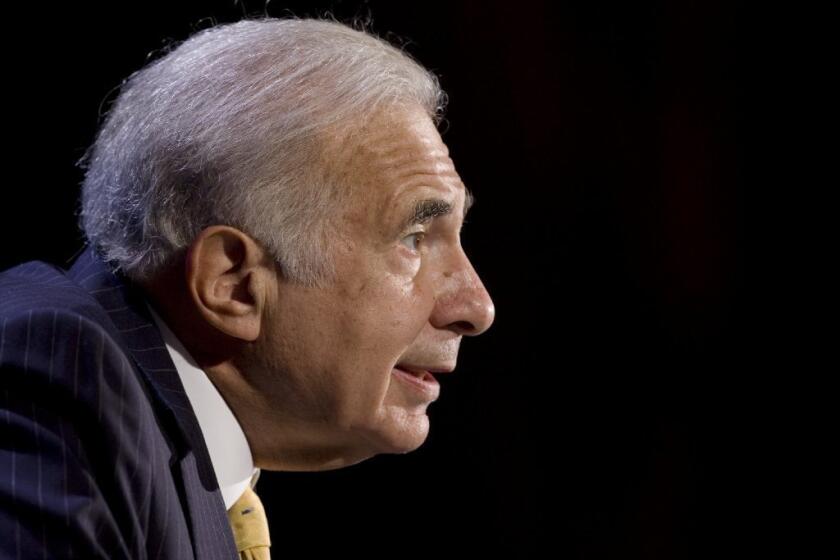
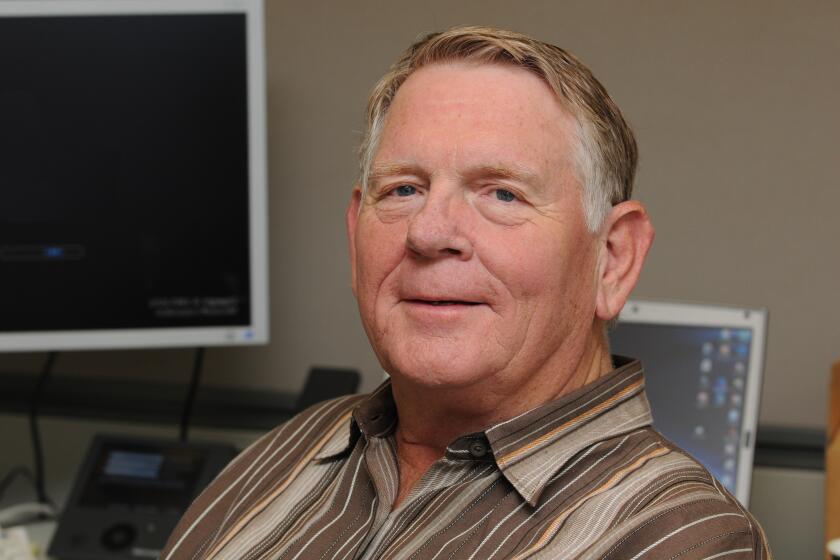
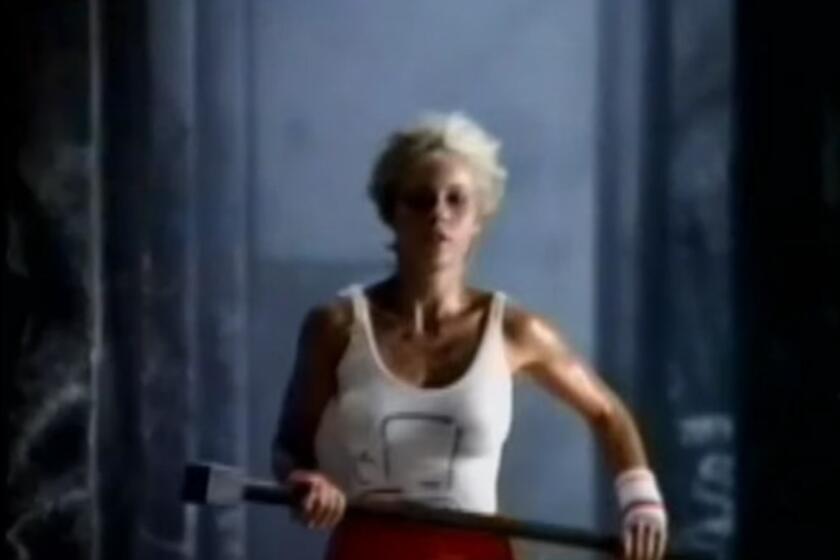
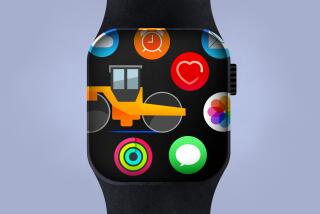
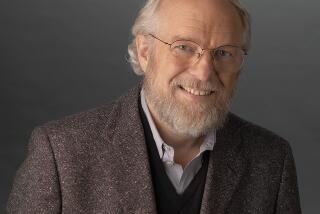
![Monrovia, CA - November 06: Original Apple-1 "NTI" motherboard and an Apple Cassette Adapter (ACI) in an original ByteShop Apple-1 koa wood case with Datanetics Keyboard Rev D [keyboard dated: Sept 21 1976] partnered with a 1986 Panasonic video monitor [model no. TR-930U; serial no. KA6320206; dated: MAY 1986]. Hand-built Apple-1 displayed for auction at John Moran Auctioneers on Saturday, Nov. 6, 2021 in Monrovia, CA. (Irfan Khan / Los Angeles Times)](https://ca-times.brightspotcdn.com/dims4/default/cc39de4/2147483647/strip/true/crop/2393x1600+4+0/resize/320x214!/quality/75/?url=https%3A%2F%2Fcalifornia-times-brightspot.s3.amazonaws.com%2F3c%2Fdc%2F63ce0c974dd9852f7e9d0ac5f4cd%2Fla-photos-1staff-868241-me-1106-apple-first-unit-001.IK.JPG)







